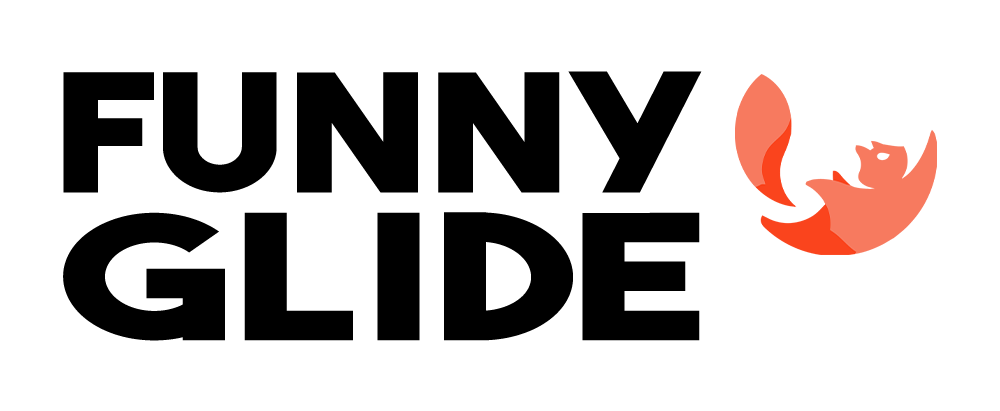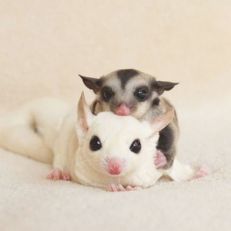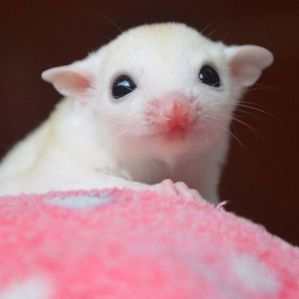
What Do Sugar Gliders Eat? A Comprehensive Guide to the Best Diet for Sugar Gliders
Sugar gliders are adorable creatures known for their incredible gliding ability. So, what do sugar gliders eat to maintain their health and agility? In this article, we’ll explore their favorite foods and how these choices impact their behavior and development.
1. Overview of Sugar Gliders
Sugar gliders, scientifically known as Petaurus breviceps, are popular pets thanks to their friendly nature, adorable appearance, and ability to glide. They are believed to originate from the tropical forests of Australia and New Guinea. These omnivorous animals enjoy a varied diet that includes both plants and animals, providing them with the rich nutrients needed to maintain their health and energy.

2. What Do Sugar Gliders Eat in the Wild?
In their natural habitat, sugar gliders consume whatever is available in the forest. Their diet changes with the seasons but generally includes:
- Fruits
- Insects: Sugar gliders can eat most types of insects and may even consume small birds or lizards.
- Tree sap: Typically from eucalyptus or acacia trees.
- Nectar and pollen
This diverse and flexible diet helps sugar gliders thrive and stay active in the wild.

3. What Do Sugar Gliders Eat as Pets?
When kept as pets, sugar gliders require a carefully balanced diet to ensure their health. An ideal diet consists of approximately:
- 40%-50% protein
- 30%-40% fruits and vegetables
- 20% insects or small live animals (based on body weight).
3.1. Fruits
Fresh fruits provide essential vitamins, hydration, and nutrients for sugar gliders. They can eat a variety of fruits, including: Apples, apricots, avocados, bananas, cantaloupe, carrots, cherries, sweet corn, dates, figs, grapes, grapefruit, honeydew melon, mangoes, oranges, papaya, peaches, pineapple, sweet potatoes, plums, and raisins.
>>> Read more: What Fruits Can Sugar Gliders Eat? Detailed nutrition guide
Tips for feeding fruits:
- Prioritize low-sugar fruits.
- Offer small amounts daily (1-2 teaspoons).
- Wash and cut fruits into small pieces.
- Remove seeds and hard peels.
3.2. Nectar
Nectar is a crucial source of energy and nutrients, mimicking their natural diet. You can either buy commercial nectar products or prepare them at home.
Funny Glide offers commercial nectar products, and we also provide a guide for homemade nectar recipes. Check out more details on our website.
3.3. Pellets
Pellets provide a balanced combination of protein, vitamins, and minerals. Use pellets specifically designed for sugar gliders. If unavailable, insectivore-specific pellets can be used.
Tips for feeding pellets:
- Always have pellets available for free feeding.
- Choose high-quality food free of preservatives and additives.
3.4. Protein-Rich Foods
- Insects: Mealworms, superworms, crickets, and roaches. Use safe, commercially sourced insects to avoid harmful toxins or parasites.
- Protein from meat: Cooked chicken, boiled shrimp, or hard-boiled eggs.
>>> Read more: What Insects Do Sugar Gliders Eat? A Complete Feeding Guide
Tips for protein sources:
- Feed insects every other day in small quantities.
- Ensure meat is thoroughly cooked to avoid bacteria.
- Avoid processed foods, and foods high in sugar, salt, or fat.

4. What foods are harmful to Sugar Gliders?
Like many other pets, sugar gliders have sensitive digestive systems and metabolisms, making it crucial to avoid certain foods that can harm them. Below are groups of foods you should keep away from sugar gliders:
4.1. Chocolate
Chocolate contains theobromine, a stimulant that can cause severe problems for the cardiovascular, nervous, and digestive systems of sugar gliders. Their digestive systems cannot efficiently metabolize theobromine, leading to toxin buildup and potential acute poisoning.
4.2. Dairy Products
Similar to many mammals, sugar gliders lack the enzyme lactase, which is needed to digest lactose in dairy products. This can lead to symptoms like diarrhea, bloating, and other digestive issues.
4.3. Foods Treated with Pesticides
Foods with pesticide residues can cause toxin accumulation in sugar gliders over time, negatively impacting their nervous system, liver, and kidneys. Always wash fruits and vegetables thoroughly and ensure they come from a safe source before feeding them to your sugar glider.
4.4. Certain Fruits and Vegetables
- Berries (strawberries, raspberries): While rich in vitamins, these fruits are high in sugar, which can lead to obesity, diabetes, or dental problems.
- Pears, figs: These fruits also contain high sugar and fiber levels, which can cause digestive issues if consumed in excess.
- Carrots, beets: These vegetables have higher sugar content compared to other vegetables. Additionally, beets contain goitrogens, which can interfere with thyroid function, especially when fed raw or in large quantities.
5. Frequently Asked Questions About Sugar Glider Diet
5.1. What should I feed my sugar glider daily?
An ideal sugar glider diet should balance essential food groups:
- 1/3 Pelleted Diet: Specially formulated pellets provide complete nutrition, including protein, vitamins, and minerals.
- 1/3 Nectar or Sap Mixture: Mimicking their natural diet, this provides essential energy. Commercial options or homemade mixtures are suitable.
- 1/3 Fresh Fruits, Vegetables, and Insects: These offer variety and supplementary nutrients.
Additionally, ensure clean and safe water is available at all times.

5.2. How much do sugar gliders eat?
Sugar gliders have low energy requirements, and overfeeding can lead to obesity, diabetes, and other health issues.
Weighing 85–140 grams on average, a sugar glider only needs about 15–20% of its body weight in food per day, roughly 15–20 grams.
Here’s an approximate breakdown:
- Nectar Mix: About 1/4 Leadbeater’s cube or equivalent.
- Pellets: 1 teaspoon.
- Fresh Fruits and Vegetables: 2–3 teaspoons.
5.3. Can sugar gliders eat hamster food?
The short answer is no. Sugar gliders and hamsters are entirely different species with distinct dietary needs. Feeding hamster food to sugar gliders can lead to nutritional deficiencies or health issues.
5.4. Can sugar gliders eat rabbit food?
Similarly, sugar gliders should not eat rabbit food for the same reason. Their nutritional needs are not met by rabbit food.
Understanding what sugar gliders eat is essential for providing them with a balanced and nutritious diet. By carefully selecting suitable foods and avoiding harmful ones, you can ensure your sugar glider stays healthy, energetic, and happy. Always prioritize their specific dietary needs, and if you have any concerns or questions about their diet, don’t hesitate to consult an expert or reach out for advice. Proper care begins with knowledge, so take the time to learn and provide the best for your furry companion!




